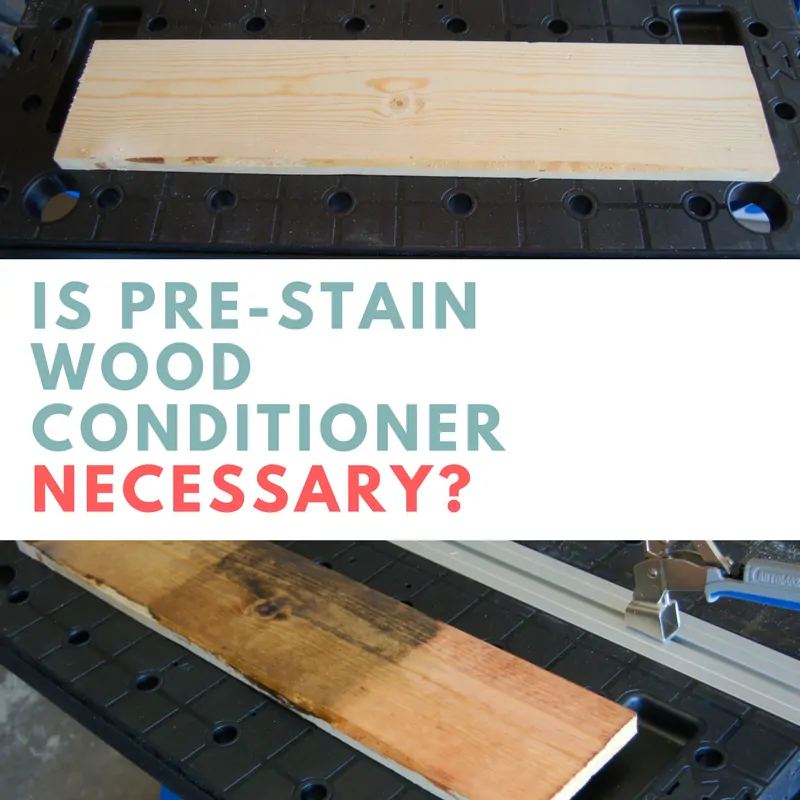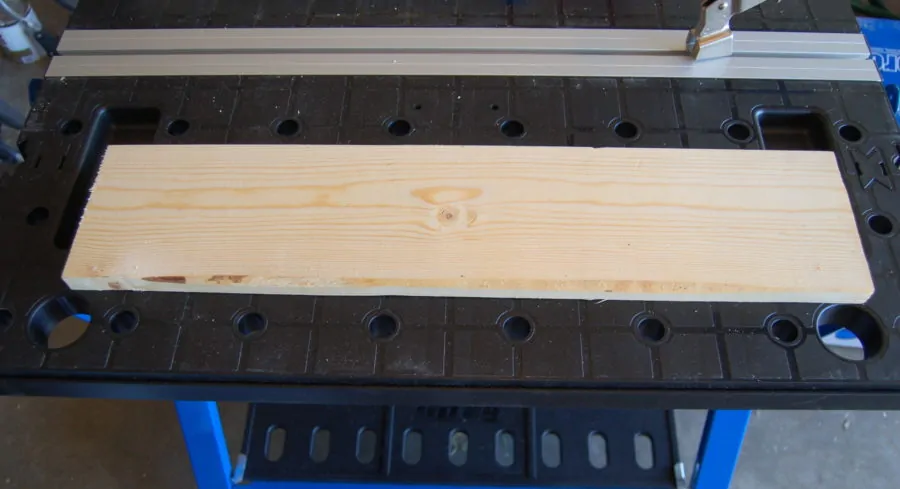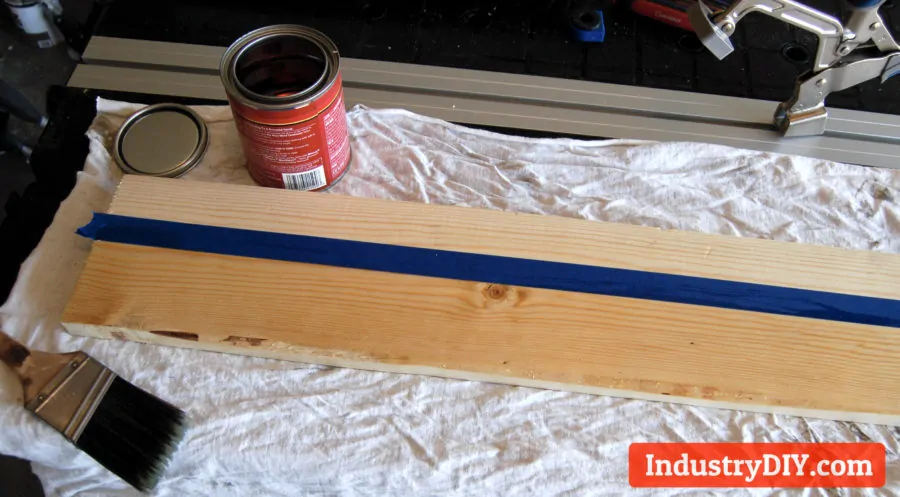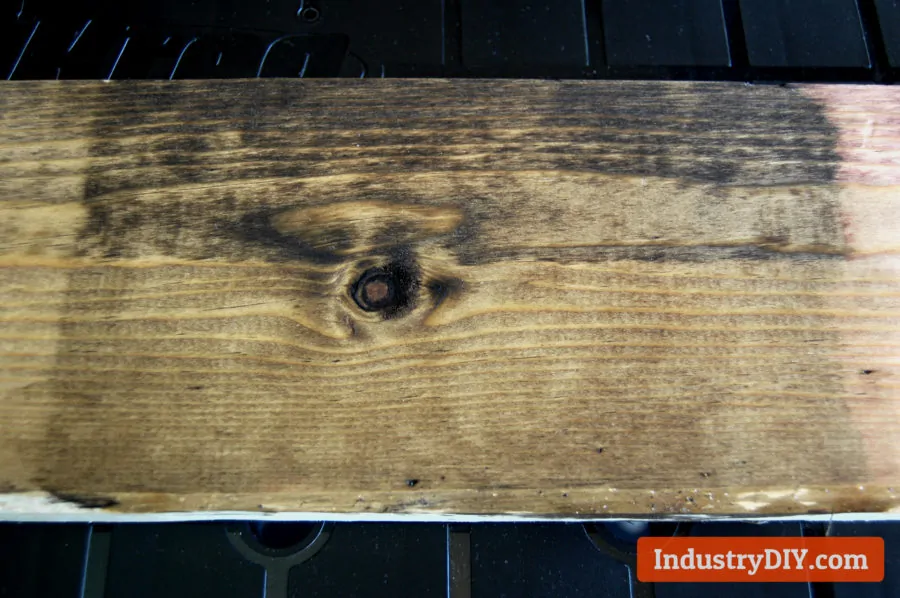I have heard the question asked before: is a pre-stain wood conditioner necessary? The short answer is: it depends. The good thing is that it is not hard to figure out whether you should use it or not.
Relevant Links
Buy Water Based Wood Conditioner
Buy Oil Based Wood Conditioner
Continue below to find out if you should use it on your project. I also perform a small test on a scrap piece of wood so you can see the difference a conditioner makes.
Wood conditioner is usually just one part varnish with two parts mineral spirits. It is not a complicated formula and it can differ based on what the finisher wants to do with the rest of the project. Different topcoats will require different wood conditioners.
My projects are normally fairly basic and include materials easily bought at a hardware store. For this reason I am strictly talking about products similar to the Minwax brand of wood conditioner. They make an oil based and a water based one.
Which type of stain and finish you use will determine which base you need.
What Does a Wood Conditioner Do?
A wood conditioner will even out the absorption of oil-based stains on certain soft woods. It accomplishes this by filling the pores of the wood and preventing deep, blotchy staining.
A porous piece of wood such as pine, especially one with many knots in it, will absorb stain unevenly. It will result in a blotchy appearance, with some areas darker and some areas lighter. It is not a desirable look.
Using a wood conditioner just before staining will (mostly) solve this issue.
When is it Necessary?
We should establish when someone would want to use a pre-stain wood conditioner.
There are certain woods that will absorb stain unevenly (blotching). These are normally soft woods like:
- pine
- spruce
- fir.
Some hardwoods are also susceptible to blotching like:
- maple
- alder
- poplar.
My projects on this blog are mostly using pine. I use this wood because it is relatively cheap, especially compared to certain hardwoods. Of course pine is not really great for “fine” woodworking, but its good enough for me. Also, it is available at many home improvement stores so it is widely available.
But pine does have some issues, and one of them is applying stain to it (sometimes the pine can be a little yellow after staining too but that’s a whole different article). You need to use a wood conditioner when applying stain to pine.
I have done a small test to showcase the differences between applying wood conditioner before staining and staining without it. (This is by no means a scientific test just a simple experiment).
Conditioner Experiment
I used a simple piece of pine wood for this experiment. It is a short 1×6 board. See picture below:
I used an oil based wood conditioner. This is because I normally use an oil based stain and finish, so I just wanted to be consistent. I do have a water based one as well, but I didn’t test it.
In the photo below you can see that I have divided the board in half and applied the wood conditioner to the bottom half.
The instructions say to make sure and apply the stain within 2 hours. Personally I would not wait that long. As soon as I am done applying the conditioner is when I start staining.
I do this because if you wait too long then the effectiveness is decreased.
One issue you may encounter is that the stain is diluted by the conditioner. You will need to take this into consideration. As always, make sure to do a test piece before you apply it to whatever you are working on.
If you have a large project then I suggest segmenting it out so that you can keep up with the conditioner that you apply.
Results
I tested three different stains. You can see the results below.
The blotchy appearance is fairly obvious on the non-conditioned parts of the board. Even the red stain has a poor splotchy look to it. (Remember the untreated portion is the top half)
Here are some closer photos of the dark stained sections:
As you can see with these close up photos there is a noticeable difference between the top and bottom.
Conclusion
From this test I think it is safe to conclude a few things (given you are trying to stain the wood):
- Pre-Stain wood conditioner IS necessary for soft, porous woods such as pine
- Dilution of the stain occurs slightly, but the darker appearance on the non-conditioned part of the wood is mostly due to uneven absorption
- Apply the stain soon after applying the conditioner
All of the materials found here can be found at home improvement stores. If you plan on staining a wood that I have not listed here as a porous type, then it may behoove you to test it anyway.
There are other methods of coloring and staining wood besides what I have shown here, each with their pros and cons. Some of the methods do not require conditioning the wood, even with woods such as pine.
Buy Water Based Wood Conditioner
Buy Oil Based Wood Conditioner
I will cover these techniques more in depth in future articles.
For more information on beginning tutorials go to this page.







Thank you
for your help
I am using water base on pine
Great stuff
I want to stain my stair treads but I don’t know what kind of wood they are. Can you help me? My understanding is if a pre stain conditioner is used on a hardwood, it won’t take the stain as readily. Any advice you can give is appreciated!
I would not expect your treads to be made from pine, but likely oak. In this case I wouldn’t bother with a conditioner. Unless you can find out what kind of wood it is, however, I can’t know for sure. If you could test a stain in an inconspicuous spot that would be ideal. One option is to use a gel stain, they are supposed to not blotch as bad as a liquid stain, and from my experience they look great.